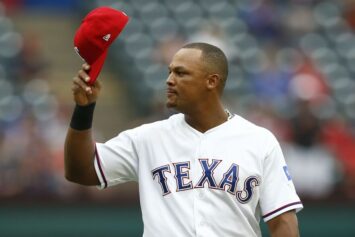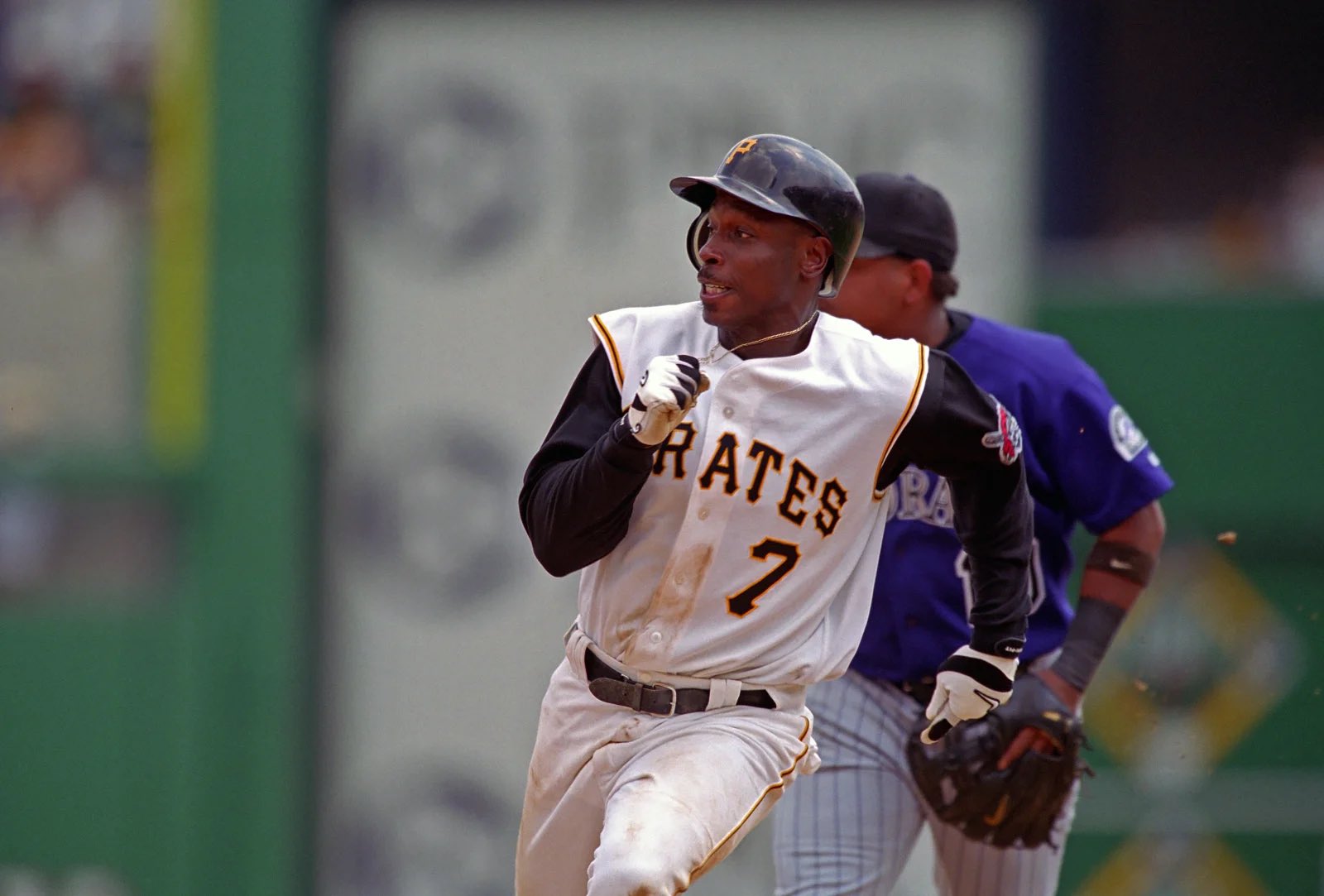Monte Irvin, the greatest living Negro Leagues baseball player turned 95 years old today. That name may not resonate with today’s baseball fans, but it should. Irvin is another black barrier-breaker and trendsetter, who used sports as a weapon to bridge races, communities and eventually nations.
Irvin, a native of Haleburg, Alabama who grew up in Orange, New Jersey, was one of the first black players to be signed after Jackie Robinson integrated baseball with the Brooklyn Dodgers in 1947. He was a baseball beast who shined both with the Newark Eagles in the Negro Leagues, where he was a teammate of Larry Doby, the first player to break the color barrier in the American League, and with the NY Giants in the National League.
“He’s the greatest living Negro League player bar none and that’s no disrespect to Hank (Aaron) and Willie (Mays) and Ernie (Banks) who played in the Negro Leagues, but played there briefly,” Negro Leagues Museum President Bob Kendrick said on MLB Network’s Hot Stove show with Harold Reynolds on Tuesday. “Monte was a substantial player, a superstar in the Negro Leagues.”
Irvin was a multi-faceted force who scorched the Negro Leagues with .422 and .396 batting averages in 1940 and 1941, then led the Mexican League with a .397 batting average and 20 dingers in 63 games, capturing the league’s MVP award.
Following a brief military stint in World War II (1943–45), Irvin returned to the Eagles and won his second batting championship hitting .401. He led his team to the pennant and helped the Eagles beat the famed Kansas City Monarchs in a seven-game Negro Leagues World Series. Irvin put up playoff numbers Big Papi can’t even touch, batting .462 with three home runs. He was a five-time Negro League All-Star and according to Kendrick, arguably The G.O.A.T. Even though there are bigger names, few had Irvin’s game, and his stamina and conditioning is obviously unmatched because while most of his contemporaries are pushing up daisies, he’s pushing a buck and still going. Irvin is the oldest living African-American to have played in the Major Leagues and the oldest surviving member of a World Series-winning team (1954 New York Giants).
“First and foremost he was an all-around athlete,” Kendrick added, “and one of the greatest athletes to ever come out of the state of New Jersey. He was a four-sport star, basketball, football, baseball and track. This man could just flat out play. I don’t know how else to say it but there was nothing that Monte Irvin couldn’t do on the baseball field. He played the infield and played the outfield and would go on to make it over to the major leagues joining Hank Thompson and Willie Mays with the New York Giants forming the first all-black outfield in MLB history.
In 1951, Irvin was the catalyst of the Giants' unfathomable regular-season comeback to overtake the Dodgers in the pennant race, batting .312 with 24 homers and a league-leading 121 RBI. Irvin hit .458 in the World Series, but his efforts are historically overshadowed by teammate Bobby Thomson’s pennant-winning “Shot Heard ‘Round the World.”
Following a dope MLB career in which Irvin batted .293 in 764 games, he continued working in baseball as a scout for the NY Mets from 1967 to 1968 and later spent 17 years (1968–1984) as a public relations specialist for the commissioner’s office. He was enshrined in Cooperstown in 1973, primarily because of his undisputed Negro Leagues dominance. Today, he actively campaigns for recognition of deserving Negro league veterans, and his number 20 was retired by the San Francisco Giants in a 2010 ceremony.
The accomplishments of players like Irvin should be especially celebrated during Black History Month. Not only was Irvin an inspiration to African-Americans, he was an international ambassador for baseball and helped plant the seeds for MLB’s current Latin explosion by playing in Puerto Rico and Cuba during the late 1940’s.
Kendrick offered an anecdote about Irvin that exemplifies his impact on the Latin American players who have come to dominate the game of baseball. Their participation in the sport can be attributed to Irvin and his Negro League teammates who traveled to Latin countries and dazzled the diamond.
“It’s a little-know story that these Negro League players would go to those countries and they were often times the first Americans to play in those Latin American countries," Kendrick said. "They became heroes in those countries. They stayed in the finest hotels and ate in the finest restaurants that those countries had to offer, and of course would come back home and be treated like second class citizens. So a lot of those men enjoyed liberties in those countries that they didn’t in their own and those Hispanic players literally patterned their games after those great Negro League stars.”
Earlier in the year Kendrick says he was talking to Roberto Clemente Jr., whose iconic dad will be honored by the Negro Leagues Museum in April during its new “Hall of Game” induction ceremony. The Hall of Game offers some historical refuge to players who were clearly the best ballers of their eras, but whose HOF chances may be inhibited in some way (steroids, career length, and injuries, under appreciation).
As a TSL article written last February 10th explained :
Somewhere along the way, baseball writers got it wrong when they left out black ballplayers like Curt Flood, Dick Allen,Frank White,Lou Whitaker and Dave Parker in their balloting for the National Baseball Hall of Fame. The Hall of Fame claims to immortalize the greats of the game, but all of these men, for large stretches of their Major League careers, were among the best at their positions.
Kendrick decided that the museum could fix this injustice by honoring Cooperstown-worthy ballplayers that played from 1960 on, and played the game with the swag and flair exhibited on a daily basis in the Negro Leagues.
“The beauty of the Negro Leagues was that it didn’t care what color you were,” Kendrick explained. “All they cared about was if you could play. So it’s in that spirit that we will honor former major leaguers who played the game with that same zest, that same feel, that same charisma and skill.”
Roberto Clemente reportedly got his swag from Monte Irvin. Clemente’s son hipped Kendrick – the font of all Negro League knowledge – to how significant the relationship was between the great Pittsburgh Pirates right fielder and the pioneering Negro Leagues first baseman/outfielder.
“He says his dad idolized Monte Irvin and that he would carry Monte Irvin’s uniform to the ball park so that he could get into the games for free,” Kendrick proudly recalls. "That was pretty common in those days and happened quite a bit, but when we talk about Roberto Clemente, we’re talking about one of all the all-time great baseball players and his idol was Monte Irvin. He patterned his game after Monte Irvin… It substantiates the wonderful connection between the Negro Leagues, Latin America, South America and The Caribbean.”
A key contributor to baseball’s waning appeal, particularly within the African-American community, is lack of historical perspective. In fact, it’s safe to say that most of today’s young MLBers don’t know their baseball history. Recently, Baltimore Orioles legend Frank Robinson was brought into the O’s clubhouse and Josh Hart, the club’s 2013 first-round draft pick had no clue who he was. Manager Buck Showalter grasped the egregiousness of Hart’s obliviousness and instructed the 19-year old to do some research and write an essay on Robinson, the only man in MLB history to flash MVP hardware in both leagues.
After all, how can you aspire to greatness if you don’t know what greatness looks like?
“No sport holds to its history the way our sport does – baseball,” Kendrick said. “It’s the one sport where we’re constantly comparing the past with those who play the game today more so than any other sport. It’s the most romanticized sport of them all. People mark periods of their lives by our sport. So it’s very important that young athletes understand the history of this sport and that the Negro Leagues is a very important part of that history.“
Hart knows that now, and guys like Monte Irvin are still alive and kicking to set these young heads straight on the true history of baseball, and why it’s still dope.



